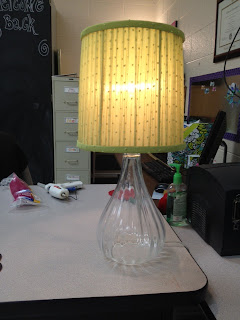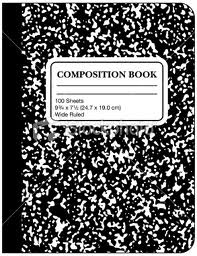I'm on a roll here!.. hehe
I loved everything about chapter 2! A note-taking strategy I use while reading professional learning books is to use post-its to record any thoughts, connections, questions, etc. As I read, I jot these down and place them on the pages where the thoughts, connections, questions, etc. occurred. With that said, I would like to share my 'post-its' with you!

This is a B-I-G deal in my classroom, and one of the biggest adjustments that have to be made. Fourth grade is a tough grade for a lot of students. It is when they become responsible for their own learning. By the end of the school year, these kiddos are ready for the big FIFTH grade. I love helping my students value the feeling of accomplishment and doing things on their own. As harsh as it may sound, by Thanksgiving, students are not allowed to come to me for questions or guidance on certain assignments. There comes a time when I want to see what they can do independently. At first.... it is so difficult. They whine, they cry, the complain, but eventually... THEY GET IT! This is part of what I call my 'training'! You can't just expect students to become responsible students over night. You have to really work with them, be there for them when they fail, and encourage them. Although I may not allow them to come to me for every bump in the road, it doesn't mean I don't love and care for them and their education.

This section of the book just revisited what I already have going on in my room, and helped me to reevaluate what I am doing and if I want to change anything about it. Here's a snapshot of what my areas look like. I am hoping to do a video tour once I get my room together.
Home Area- my students switch classes for every subject, so I see about 50-75 students a day. It is difficult for each of them to have a home area in my room. However, I try to make them feel comfortable with using my supplies while they are in my classroom. I have groups in my classroom created by two trapezoid tables combined to create a hexagon and seating for six {I only allow 5 at a table so the 6th person is not sitting with their back to me during whole group instruction}. On their table, I have
these cute bins from Really Good Stuff. Inside I have crayons, pencils, markers, and a pencil sharpener. I also have a large cabinet that stores classroom supplies like large quantities of markers, crayons, construction paper, and additional supplies {in a labeled container} for each table.
Large-Group Meeting Area- this is where I have my whole group lessons as well as my homework board. I have a podium, SmartBoard, and an easel {which I'm trying to move somewhere else in my room}.
Small-Group Area- In this area I have LOTS of lamps, a kidney-shaped table, stools for student seating {takes up less room than chairs}, and a rolling drawer organizer that houses paperclips, post-its, dry-erase boards/markers, timers, and several other small things. Behind my table I have a counter. This is where my students' portfolios are stored in a portable filing box. I am going to get better this year about using these... I promise!!! I also have a clipboard with charts for anecdotal notes during my small group instruction.
Workshop Area
For workshop time, I have two activities going on...
Calendar Area- this area has my calendar board {actually a whiteboard divided into sections} and an area for students to sit. They have a calendar book they work from. You can learn more about that from
this post.
Workstation Area- this is where I store my workstations. Students are allowed to take baskets any where in the room as long as it is away from my small group area. You can learn more about this area in
this post.
Journals, Journals, Journals! This is something new I tried in my classroom this past year. I used these...
I would write our journal prompt on my Wheasel and have my students write and solve it in their math journal.
It is a great way to get students thinking about math, but it was very time consuming. I thought time management would get better as the year progressed... it did not! So, I began thinking of ways to have the same idea, but to save a lot of time. I have posted about my standards checklist folder
here. In this post, I used a metal prong to hold my papers. I have recently went back to just stapling at the top. I decided to do the same thing for my journals, but to keep them on the left side of the standards checklist folder.
Here's a preview of what they looked like.
I have the prompts typed and ready to go on Mondays. I already have the pages stapled in their folder when I hand them out for their Monday journal. However, at the end of the school year, these boogers became a battlefield of wounds. There were so many staples on both sides that it was impossible to NOT prick your finger and bleed. So, what am I going to do about this? I am going to create new folders every nine weeks. I plan on keeping the finished folders in the students' portfolio so I can use them at parent conferences and such.
I did have some comments on graphic organizers, but I think I am done for now :) This post is already WAA-Y too long!
There you have it... my lengthy thoughts on chapter 2!.. FINALLY!!!

Labels: Guided Math Book Study























